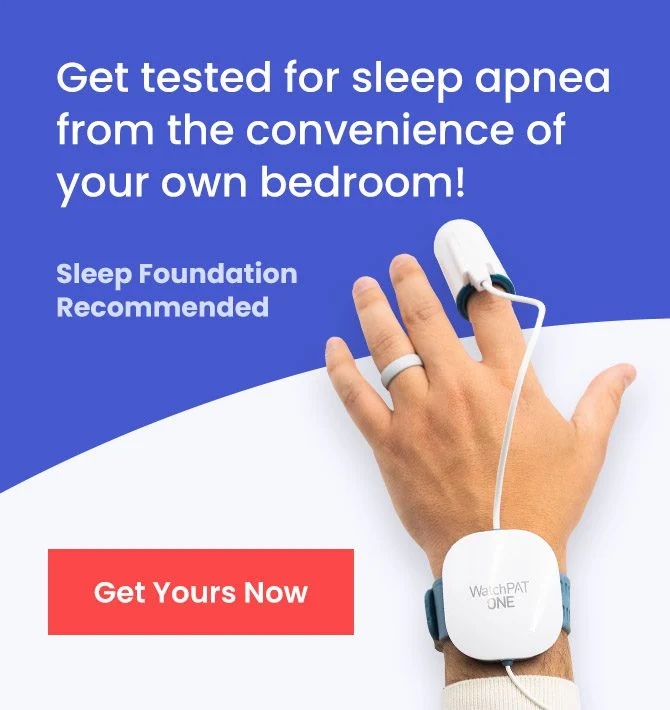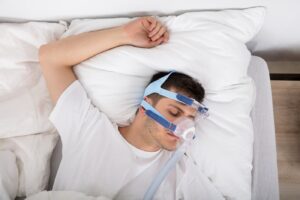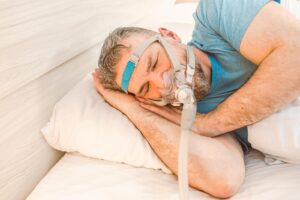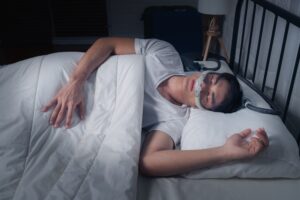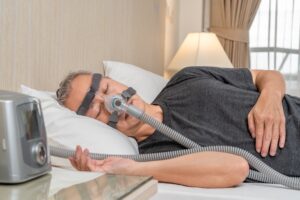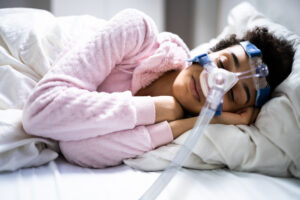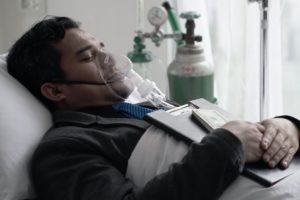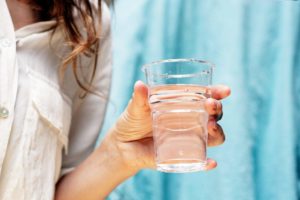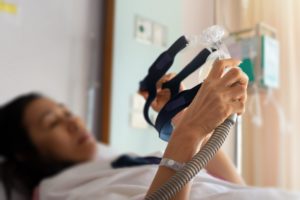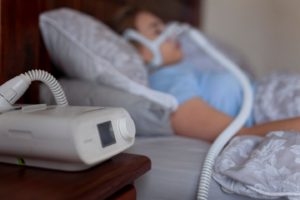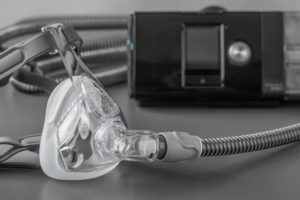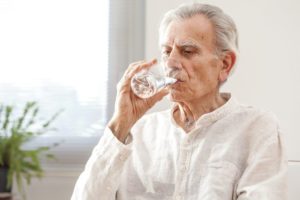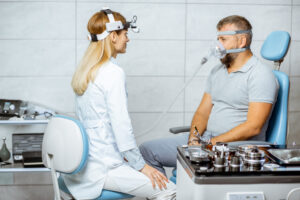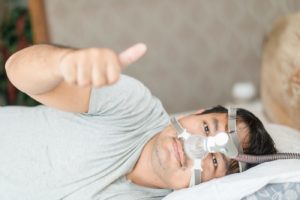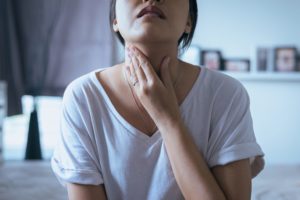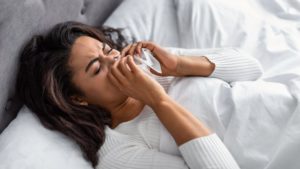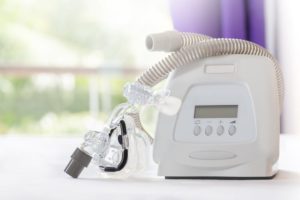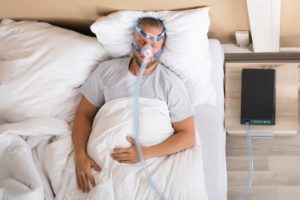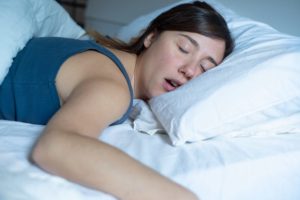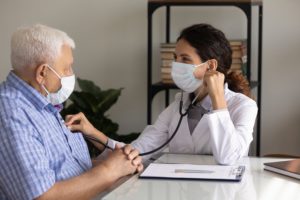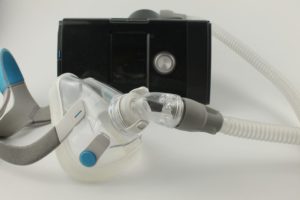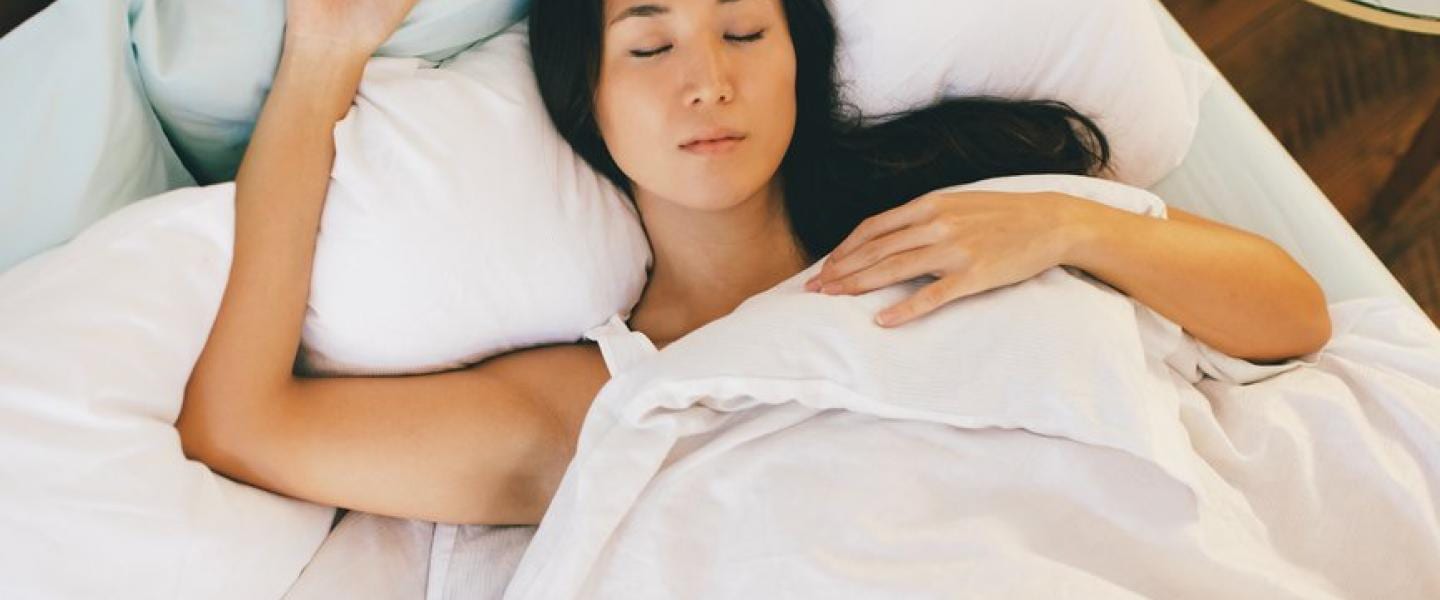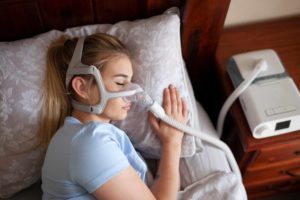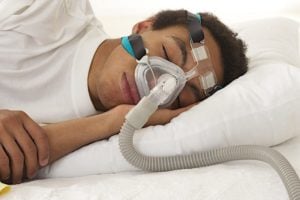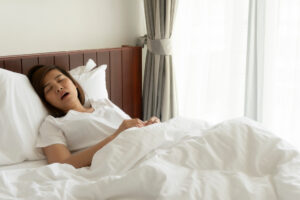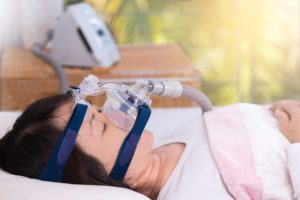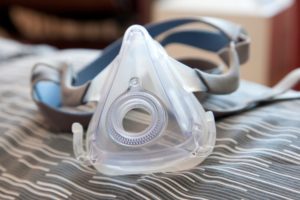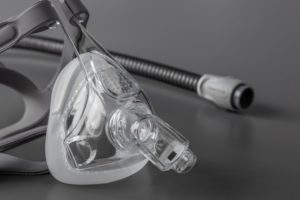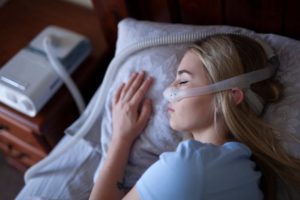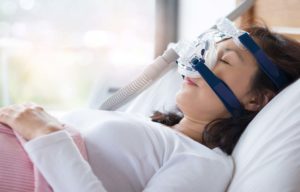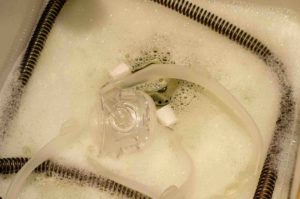When you buy through our links, we may earn a commission. Products or services may be offered by an affiliated entity. Learn more.
CPAP Benefits
Obstructive sleep apnea (OSA) is a common sleep-related breathing disorder that affects an estimated 10% to 30% of people living in the United States. People living with sleep apnea experience interruptions in breathing during sleep that can lead to snoring, daytime sleepiness, and poor quality sleep.
Research suggests that people living with undiagnosed and untreated sleep apnea are at greater risk for cardiovascular issues, stroke , and depression .
Continuous positive airway pressure (CPAP) therapy can be an effective treatment for many people living with sleep apnea. People using CPAP therapy for obstructive sleep apnea may also experience other benefits to CPAP use including improvements in health conditions associated with OSA.
We discuss the benefits of CPAP use and ongoing research on the potential benefits of treating sleep apnea with CPAP therapy. We also highlight alternatives to CPAP for sleep apnea treatment.
Suspect You May Have Sleep Apnea?
Answer three questions to understand if you should be concerned.
Heart Health
Research suggests that CPAP therapy may improve cardiovascular health in people with obstructive sleep apnea, though more research is needed.
- Blood pressure: Studies show that CPAP therapy lowers blood pressure, even if the CPAP user did not have high blood pressure before beginning treatment. Keeping blood pressure in a healthy range reduces the risk of stroke and heart disease.
- Arrhythmia: Heart arrhythmias are events where the heart beats too slow, too fast, or irregularly. Early research suggests that CPAP use can reduce the occurrence of nighttime arrhythmias.
- Heart failure: A number of small studies have found that the use of CPAP improves the heart’s ability to pump blood and may reduce the risk of heart failure. In patients diagnosed with heart failure, CPAP therapy may help improve heart function.
Lower Stroke Risk
Some research suggests that treating obstructive sleep apnea may lower a person’s risk of having a stroke. This may be because CPAP therapy lowers high blood pressure, a risk factor for stroke.
Many people who have a stroke also have obstructive sleep apnea. Limited research suggests that CPAP treatment may improve health outcomes in people with sleep apnea who have had a stroke.
Experts agree that more research is needed to understand the relationship between CPAP therapy and stroke.
Less Daytime Sleepiness
Because sleep apnea can disrupt sleep or reduce the total amount of time spent sleeping at night, the disorder can lead to daytime sleepiness. Daytime sleepiness refers to being unusually sleepy during portions of the day when people normally feel alert and awake. Some people with sleep apnea experience excessive daytime sleepiness where symptoms of daytime sleepiness persist for three months or more.
Most people undergoing CPAP therapy experience a decrease in daytime sleepiness. Some research suggests that as many as 75% of people who use CPAP therapy for obstructive sleep apnea resolve their daytime sleepiness symptoms. The number of hours a person uses CPAP and the severity of daytime sleepiness may influence how well therapy works.
CPAP therapy for OSA may also improve daytime alertness. Initial findings indicate that CPAP users may experience improved performance, memory, and concentration.
Lower Risk of Car Accidents
Insufficient sleep caused by obstructive sleep apnea is linked to a higher risk of vehicle accidents . Without enough quality sleep, people respond slower, have greater difficulty making decisions, and struggle to focus on simultaneous tasks, all of which affect driving. Treating OSA is key to preventing these accidents.
Drivers who use CPAP therapy are at a much lower risk for near-miss accidents and vehicle crashes. The effectiveness of CPAP treatment in preventing car accidents depends on a person consistently using CPAP.
Improved Mental Health
People with untreated obstructive sleep apnea are at greater risk for mental health issues including depression, moodiness, and irritability. Some studies suggest that there is also an association between sleep apnea and anxiety .
Research has demonstrated that regular use of CPAP therapy to treat sleep apnea can lessen symptoms of depression . Some studies have also found that people who use their CPAP machine as prescribed may experience less depression . More research is needed to understand the effect of CPAP for OSA on improvements in mental health.
Less Snoring
Snoring is among the most common obstructive sleep apnea symptoms. People living with OSA who snore are sometimes unaware of the behavior. However, snoring can be disruptive to people who share a room or bed with a person with sleep apnea.
Snoring occurs when the airway narrows and the tissues in the airway vibrate. Because a CPAP mask prevents the airway from closing, many people with obstructive sleep apnea who use CPAP experience less snoring. In some cases, snoring may completely resolve.
Deciding if CPAP Is Right for You
CPAP is considered the most effective therapy for obstructive sleep apnea, though the treatment may not be appropriate for everyone. People considering CPAP as a treatment for their sleep apnea can choose to perform an at-home sleep study and should talk with their doctor about the risks and benefits of the therapy.
For some people, such as adults over the age of 80, CPAP therapy may be less effective. Other CPAP users may experience side effects such as aerophagia or excess swallowing of air, facial discomfort, and dryness in the nose or mouth. These side effects can make it difficult for some users to continue with therapy.
If you are using CPAP therapy to treat your obstructive sleep apnea and you have questions about whether the treatment is right for you, consult your health care provider and make sure to find the best CPAP machine for your needs.
Alternatives to CPAP
There are several alternatives to CPAP therapy to treat obstructive sleep apnea. Some of these approaches can be used in combination to help reduce the symptoms of OSA.
- Oral appliance: An oral appliance keeps the mouth open and the jaw forward to prevent airway obstruction. Oral appliances are the most frequently used treatment for sleep apnea aside from CPAP. For people with mild sleep apnea, oral appliances treat symptoms as effectively as CPAP.
- Changing sleep position: Back sleeping worsens the symptoms of obstructive sleep apnea for more than 50% of people with the disorder. Side sleeping, stomach sleeping, or back sleeping at a raised angle of 60 degrees can improve sleep apnea.
- Weight loss: Being overweight or obese increases risk for sleep apnea. There is evidence that weight loss can decrease the number of episodes of stopped breathing during sleep by 26%.
- Lifestyle changes: Avoiding alcohol or sedatives before bedtime may help relieve symptoms of sleep apnea. Additionally, improved diet and increased exercise reduce the severity of sleep apnea.
- Surgery: Some people with obstructive sleep apnea who do not respond to other treatments may benefit from surgery. Possible surgeries include the removal of the tonsils or excess throat tissue, repositioning of the jaw, and removal of nasal obstructions.
Medical Disclaimer: The content on this page should not be taken as medical advice or used as a recommendation for any specific treatment or medication. Always consult your doctor before taking a new medication or changing your current treatment.

Still have questions? Ask our community!
Join our Sleep Care Community — a trusted hub of product specialists, sleep health professionals, and people just like you. Whether you’re searching for the perfect mattress or need expert sleep advice, we’ve got you covered. Get personalized guidance from the experts who know sleep best.
References
10 Sources
-
Kline, L. R. (2022, April 1). Clinical presentation and diagnosis of obstructive sleep apnea in adults. In N. Collop (Ed.). UpToDate., Retrieved May 24, 2022, from
https://www.uptodate.com/contents/clinical-presentation-and-diagnosis-of-obstructive-sleep-apnea-in-adults -
Culebras, A. (2021, June 18). Sleep-related breathing disorders and stroke. In M. S. Badr (Ed.). UpToDate., Retrieved May 5, 2022, from
https://www.uptodate.com/contents/sleep-related-breathing-disorders-and-stroke -
Faria, A., Allen, A. H., Fox, N., Ayas, N., & Laher, I. (2021). The public health burden of obstructive sleep apnea. Sleep Science, 14(3), 257–265.
https://pubmed.ncbi.nlm.nih.gov/35186204/ -
Mehra, R. (2021, August 25). Obstructive sleep apnea and cardiovascular disease in adults. In N. Collop (Ed.). UpToDate., Retrieved May 5, 2022, from
https://www.uptodate.com/contents/obstructive-sleep-apnea-and-cardiovascular-disease-in-adults -
Bonsignore, M. R., Pepin, J. L., Cibella, F., Barbera, C. D., Marrone, O., Verbraecken, J., Saaresranta, T., Basoglu, O. K., Trakada, G., Bouloukaki, I., McNicholas, W. T., Bailly, S., Pataka, A., Kvamme, J. A., Hein, H., Mihaicuta, S., Grote, L., & Fanfulla, F. (2021). Excessive daytime sleepiness in obstructive sleep apnea patients treated with continuous positive airway pressure: Data from the European sleep apnea database. Frontiers in Neurology, 12.
https://pubmed.ncbi.nlm.nih.gov/34434158/ -
Cirelli, C. (2022, March 13). Insufficient sleep: Definition, epidemiology, and adverse outcomes. In R. Benca (Ed.). UpToDate., Retrieved May 5, 2022, from
https://www.uptodate.com/contents/insufficient-sleep-definition-epidemiology-and-adverse-outcomes -
Kaufmann, C. N., Susukida, R., & Depp, C. A. (2017). Sleep apnea, psychopathology, and mental health care. Sleep health, 3(4), 244–249.
https://pubmed.ncbi.nlm.nih.gov/28709510/ -
Zheng, D., Xu, Y., You, S., Hackett, M. L., Woodman, R. J., Li, Q., Woodward, M., Loffler, K. A., Rodgers, A., Drager, L. F., Lorenzi-Filho, G., Wang, X., Quan, W. W., Tripathi, M., Mediano, O., Ou, Q., Chen, R., Liu, Z., Zhang, X., … Anderson, C. S. (2019). Effects of continuous positive airway pressure on depression and anxiety symptoms in patients with obstructive sleep apnoea: Results from the sleep apnoea cardiovascular Endpoint randomised trial and meta-analysis. EClinicalMedicine, 11, 89–96.
https://pubmed.ncbi.nlm.nih.gov/31312807/ -
Walker, A., Naughton, M. T., Shaw, L., Jeklin, A. T., Martin, C., & Dabscheck, E. (2021). Depression scores improve with continuous positive airway pressure in specialized sleep clinics: Real-world data. Journal of Clinical Sleep Medicine, 17(6), 1201–1209.
https://pubmed.ncbi.nlm.nih.gov/33590822/ -
Omobomi, O., & Quan, S. F. (2017). Positional therapy in the management of positional obstructive sleep apnea—a review of the current literature. Sleep and Breathing, 22(2), 297–304.
https://pubmed.ncbi.nlm.nih.gov/28852945/



